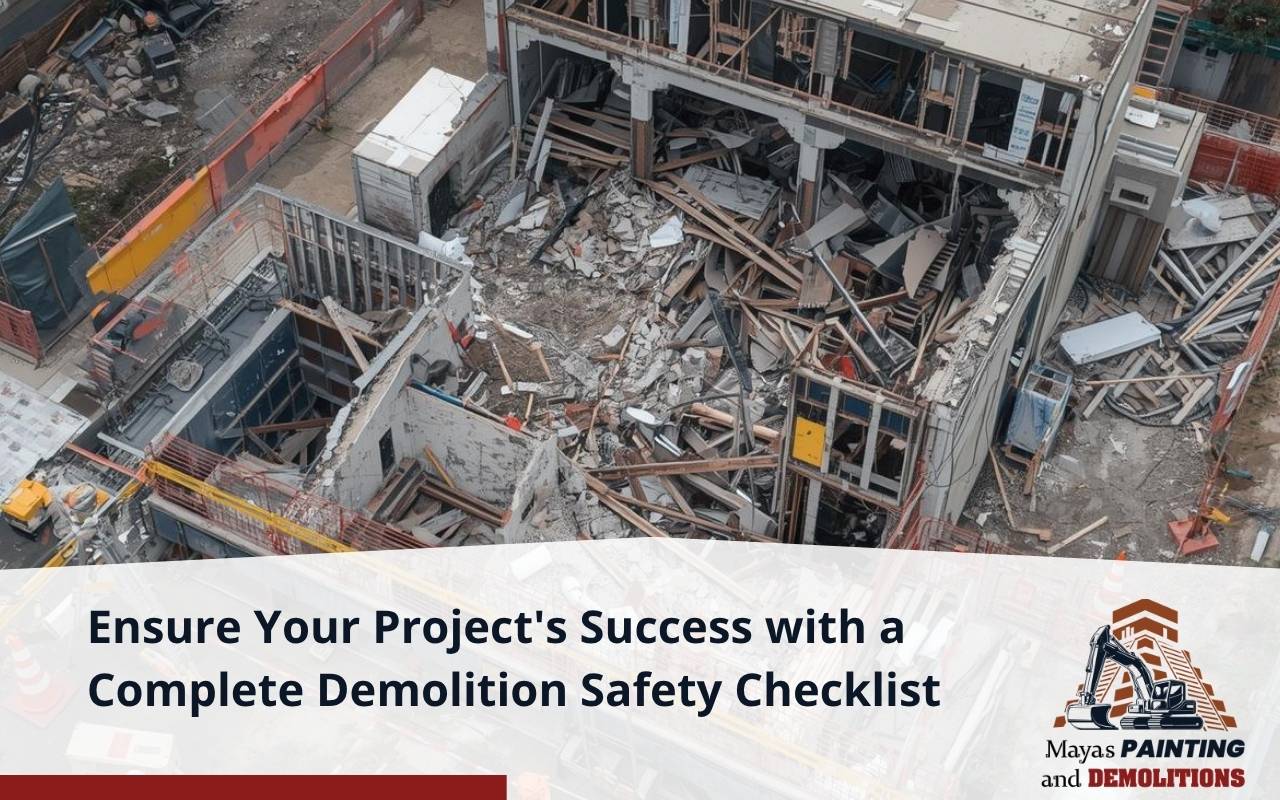
Consider the complexities inherent in demolition work. It’s not just about tearing down walls; it’s about doing so safely. Whether you’re an experienced contractor or a project manager overseeing your first demolition, the stakes are high. A single oversight can lead to serious injuries, costly delays, and legal complications. This is why having a robust demolition safety checklist is essential. It serves as a pivotal tool in ensuring every aspect of the demolition process is handled with care and precision.
Emphasize preparedness in every phase of demolition. The checklist isn’t merely a list of tasks—it is your roadmap to a successful project. From assessing the site for potential hazards to ensuring proper safety gear availability, each item prevents accidents and promotes a culture of safety. Implementing a thorough demolition safety checklist protects your team and enhances project efficiency.
Site Assessment for Potential Hazards
- Conduct a detailed walkaround to spot dangers like loose debris or unstable walls.
- Check for overhead power lines, flammable materials, or wildlife that may pose risks.
- Document uneven ground, trip hazards, and underground utilities.
- Use simple tools such as measuring tapes, chalk lines, and cameras to map hazards.
- Talk to site owners about past issues like chemical spills or previous structural damage.
Tailor your demolition safety checklist to the unique site conditions, minimizing risks and keeping your crew safer. Learn more about preparing for demolition on our Pre-Demolition Checklist.
Verification of Proper Safety Gear
- Confirm each worker has a hard hat rated for impact protection.
- Ensure eye protection, gloves, and steel-toed boots are worn.
- Inspect respirators, hearing protection, and harnesses for damage.
- Record all inspections on the demolition safety checklist.
These steps build confidence that each team member is properly protected throughout the project.
Establishment of Secure Demarcation Zones
- Mark work zones clearly and restrict access to authorized personnel.
- Use barricades, safety tape, or fencing to surround the site.
- Position warning signs at all entry points to keep bystanders safe.
- Define buffer zones to catch flying debris or dust.
- Assign gatekeepers to control site access and ensure trained personnel only enter.
Controlling access and organizing traffic reinforces a safe perimeter. For further guidance, contact us via our Contact Page.
Inspection of Equipment and Machinery
Equipment failure can halt a project or cause severe injury. Review maintenance records for all machines. Examine hydraulic lines, engine functions, and attachments for wear. Operators should perform pre-use inspections daily, ensuring safety and proper operation. Keep records of inspections and repairs to maintain accountability and safety. Adding this step to your demolition safety checklist reduces downtime and prevents accidents.
Creation of Emergency Response Plan
Emergencies can occur despite precautions. Outline steps for scenarios like sudden collapse, medical injury, or fire. Assign roles and display the plan in break areas. Map evacuation routes and designate assembly points. Run drills to test reaction times. A practiced plan ensures everyone knows what to do when seconds count, fulfilling a critical item on your demolition safety checklist.
Training and Briefing Sessions for Team Members
Hold comprehensive briefings before work begins. Cover site-specific hazards, safety gear, and emergency procedures. Use diagrams or photos to clarify instructions. Offer hands-on training for new equipment and run toolbox talks daily. Keep attendance records and sign-offs for each session. Regular communication reinforces safety and ensures all members understand their roles.
Environmental Considerations and Hazardous Materials Handling
Test materials for asbestos, lead, or other toxins before demolition. Hire certified specialists for removal. Seal work areas and use air filtration to prevent dust spread. Collect waste in labeled containers and follow disposal regulations. Cleaning equipment and monitoring air quality maintains safety for workers and the community.
Compliance with Regulations and Permits
Research local, state, and federal regulations. Secure necessary permits for noise, emissions, and waste disposal. Keep copies on-site and review with the team. Schedule inspections and promptly address warnings. Staying compliant protects your project and demonstrates professionalism. This step should always be included in your demolition safety checklist.
Frequently Asked Questions
What is a demolition safety checklist?
It is a structured list to ensure every demolition task is carried out safely and efficiently.
Who should use this checklist?
Contractors, project managers, and demolition crews can all benefit from following a demolition safety checklist.
How often should the checklist be updated?
Update it whenever site conditions change or new equipment and procedures are introduced.
Yes, compliance with local, state, and federal regulations is mandatory during any demolition project.
Can training improve checklist effectiveness?
Absolutely, regular training ensures team members understand hazards and safety procedures outlined in the checklist.
Regular Safety Audits and Reviews
Integrate routine audits to ensure ongoing safety. Schedule weekly or biweekly reviews of practices, equipment, and adherence. Use audit forms covering PPE, barriers, and housekeeping. Conduct feedback sessions and update the checklist accordingly. This process maintains a living document that adapts to changing site conditions.
Safeguarding Success Through Comprehensive Demolition Safety Practices
Each step—from site assessment to audits—builds a safer environment and boosts efficiency. By following these guidelines, your team avoids hazards and complies with regulations. A well-executed demolition safety checklist is the backbone of any successful demolition project.
